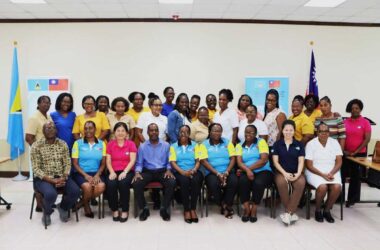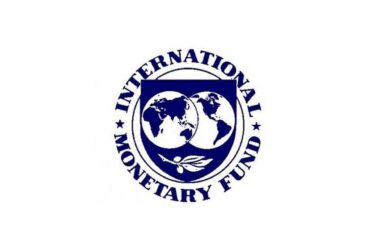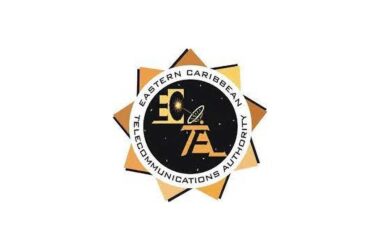Health officials this week confirmed the start of a fifth wave of the coronavirus in country, and have advised Saint Lucians to pay strict adherence to the protocols in an effort to keep the wave from spiraling out of control.
Noting that the past seven days registered a daily infection rate of 11.6 per 100,000 population per day, with a seven percent testing positivity rate and a transmission rate of 1.9, the health officials are calling on Saint Lucians to get vaccinated to avoid developing COVID-19, its severe forms, complications, hospitalizations and death.
“We note increases in most of the public health indicators over the last seven days, the transmission rate, test positivity rate, increased active cases and the epidemiological wave depicts the upward trajectory of the start of the 5th wave. We are at high risk of introduction of the Omicron variant which is characterized for the high level of transmission and we still have the Delta variant in circulation locally,” stated the Ministry of Health in a report Wednesday.
Claiming that December is Saint Lucia’s highest risk month for COVID-19 transmission, the Ministry said it was imperative that all Saint Lucians reduce their level of social activities at this time and ensure compliance to all the public health measures.
As a reminder of the severity of the COVID-19 situation on island, the Caribbean Public Health Agency (CAPHA) this week reported 20 new cases of the Delta variant 14 being nationals and six visitors, with the majority of cases of that variant from Anse la Raye and Canaries.
Saint Lucia presently has a total of 54 cases of the Alpha variant and 71 cases of the Delta variant.
The Ministry of Health, Wellness and Elderly Affairs continues to place more emphasis on the importance of vaccination against COVID-19 in an effort to mitigate the impact of COVID-19 on individuals, their families and the country.
Stating that high social interactions in the absence of population immunity, especially during this festive season, provides the condition to fuel the transmission of COVID-19, health officials are trumpeting COVID-19 vaccines as the best protection by reducing the risk of transmission, symptomatic disease, severe illness, hospitalization and death. They are of the view that the national vaccination programme offers vaccines (AstraZeneca, Pfizer and Johnson & Johnson) which are very effective at keeping people out of hospital.
As of Tuesday this week, 27 percent of the population were said to be fully vaccinated, an amount health officials noted does not afford the level of protection that will reduce the spread of COVID-19 in the country.
“The more hesitant we remain towards vaccination, the more we expose ourselves and increase our risk to COVID-19 and variants such as Delta and Omicron,” stated the Ministry of Health.
Earlier this year, during the peak of the fourth wave of COVID-19, the healthcare system and first responders became overwhelmed, an observation made by the Ministry of Health, hence the call now for people to think not only about themselves but also about others, especially those who might be at a greater risk of becoming seriously ill from COVID-19.
“Think about the burden on frontline workers, the healthcare system, and the economy. Vaccination, undoubtedly, is the most cost-effective public health measure in response to this pandemic. Get vaccinated and boosted, and let us remember the measures proven to be effective in reducing the risk of becoming infected and spreading COVID-19. Limit your exposure to people whose vaccination status is unknown; maintain good ventilation and wash hands often, and wear your masks when in public places,” urged the Ministry of Health.
Meanwhile the Pan American Health Organization (PAHO) data showed that COVID-19 cases increased 50% and deaths 11% in the region of the Americas from December 19 to 25, and that more than half of countries and territories in the region reported an increase in cases of over 20%. The Omicron Variant of Concern has been reported in 27 countries and territories of the Americas.
According to PAHO, the largest number of new cases were reported in the United States, followed by Canada and Argentina. In Central America, no increase in cases was reported, except in Panama and Belize, which saw cases rise in some of its regions.
Bolivia leads the increase in cases in the Andean region, with Colombia, Ecuador and Peru also reporting rising numbers and in the Southern Cone, Paraguay and Uruguay reported increases, while Brazil saw a decrease in cases.
The number of COVID-19 cases is also rising in the Caribbean region. Puerto Rico, the Dominican Republic, and Jamaica show significant increases compared to the previous week. Trinidad and Tobago, on the other hand, reported declines.
PAHO warns that the increase in SARS-CoV-2 virus circulation in several countries, coupled with greater personal contact due to the holiday and vacation season, may lead to a rise in cases, hospitalizations, and deaths in the coming weeks.
To reduce COVID-19 transmission, PAHO continues to recommend vaccination and public health measures. These include the use of tight-fitting masks, physical distancing, ventilation of indoor spaces, avoidance of crowds, and hand hygiene.
In addition, PAHO continues to call on countries to accelerate vaccination coverage against COVID-19. As of December 28, more than 1.4 billion doses have been administered in the Americas, and 57% of the population in Latin America and the Caribbean is fully vaccinated.
The COVAX Facility, through PAHO’s Revolving Fund, has so far delivered more than 76.2 million doses of vaccines to 33 countries in the Americas, many of them donated by other countries.













